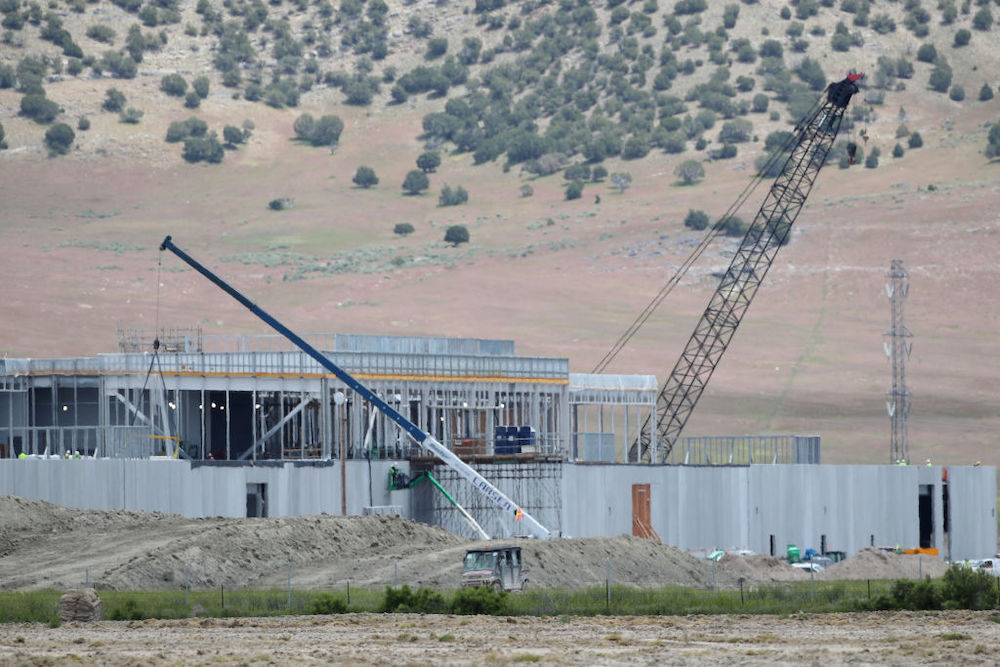- COVID-19 is bolstering operations at data centers that are already consumers of water, especially in the arid Southwest.
- Data centers use massive amounts of water and generate, in many cases, millions of gallons daily of wastewater.
- The Southwest is attracting massive investments from Google, Microsoft, Switch and other companies looking to expand in the lucrative industry.
While the coronavirus is giving the planet’s environment a respite from pollution, not all resources are getting a break.
Groundwater supplies, particularly in drier parts of the U.S., are being tapped more than ever by the enormous data centers run by Microsoft, Google and other tech giants, which require vast quantities of water for cooling and power generation. Data center usage is soaring amid a surge in telecommuting services like video conferencing and virtual private networks as employees are forced to work from home.
“In many groundwater-dependent regions is that they are either already facing severe groundwater depletion or that they will in the future,” Michelle Miro, an engineer at the RAND Corporation with expertise in water resources policy, told Karma. “In many parts of the West, water use is already unsustainable.”
AT&T last week reported a 7-fold increase in the use of its virtual private network and online meeting service. Zoom said users rose to 200 million at the end of March from 10 million in December. Home entertainment is also increasing the load in data centers — Verizon said video gaming has increased 75%, web traffic is up 20% and streaming services have gained 12% amid the pandemic, according to The Hollywood Reporter.
Communities have seen the data centers as an economic godsend, delivering jobs and tax revenue. Google was promised 1 million gallons a day to cool a new data center in arid Mesa, Arizona, last year, an amount that could rise as high as 4 million gallons a day. This is part of a rush of investment in the Southwest, with Switch continuing to expand its Las Vegas data center, the largest in the country, and building another giant facility in Reno.
“Sometimes there’s a trade-off between the economy and water,” Miro said. “Many rural areas and small towns in the West are trying to encourage economic development and may be looking to companies that offer opportunities to site data centers in their towns.”
The water use of Google’s centers has put the company in conflict with local utilities and conservation groups. The company asked for, or was granted, more than 2.3 billion gallons of water for centers in three states in 2019, Bloomberg News reported. Google will probably come into further conflict as it competes with Amazon and Microsoft for a greater slice of growing cloud-computing market, Bloomberg said.
U.S. data centers are projected to use 174 billion gallons of water this year, according to the Energy Department’s Lawrence Berkeley National Laboratory. Technology giants aren’t the only parties building the centers; government agencies have built them too. The National Security Agency’s biggest data center is reported to use 1.7 million gallons of water a day and is located in drought-prone Utah.
“Some groundwater, such as parts of the Ogallala Aquifer, aren’t being replenished or used sustainably, while others are,” Miro said. “What we’re seeing is a slow-moving tragedy of the commons.”
Data centers have made progress in curbing their consumption of drinking-water supplies. There has been a switch by some companies to using recycled water or seawater. There are also design changes that reduce the need for water.
“Economic development can be focused on green jobs or other sustainable development approaches that don’t consume so much water,” Miro said.
There’s growing evidence that data centers can be water neutral, and even have a small positive impact on supplies. CyrusOne, a global data center real estate investment trust announced in March that its data center campus in Chandler, Arizona, is net water positive. The company claims that its proprietary technology “dramatically reduces” water use, curbing company-wide usage by millions of gallons per year. CyrusOne is also partnering with the Bonneville Environmental Foundation to restore nearby wetlands.
Photo by George Frey/Getty Images






















